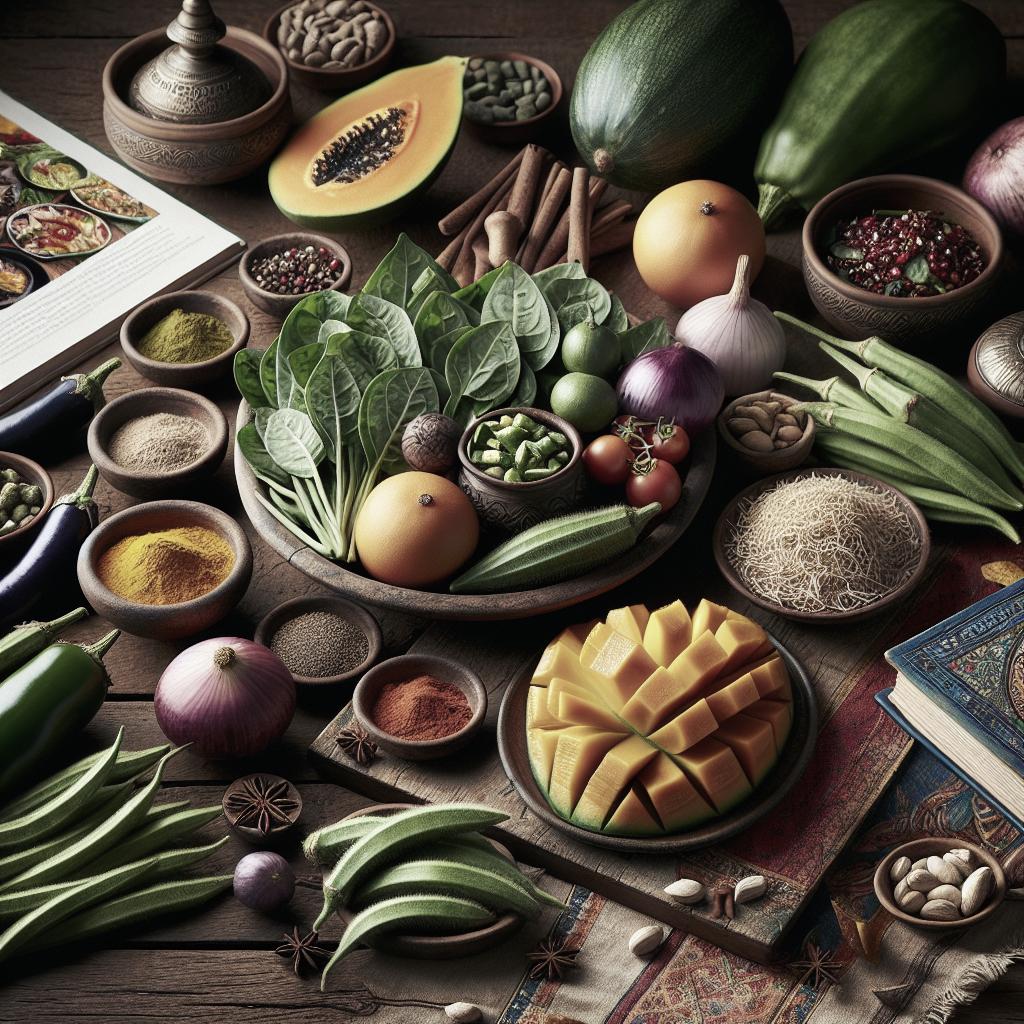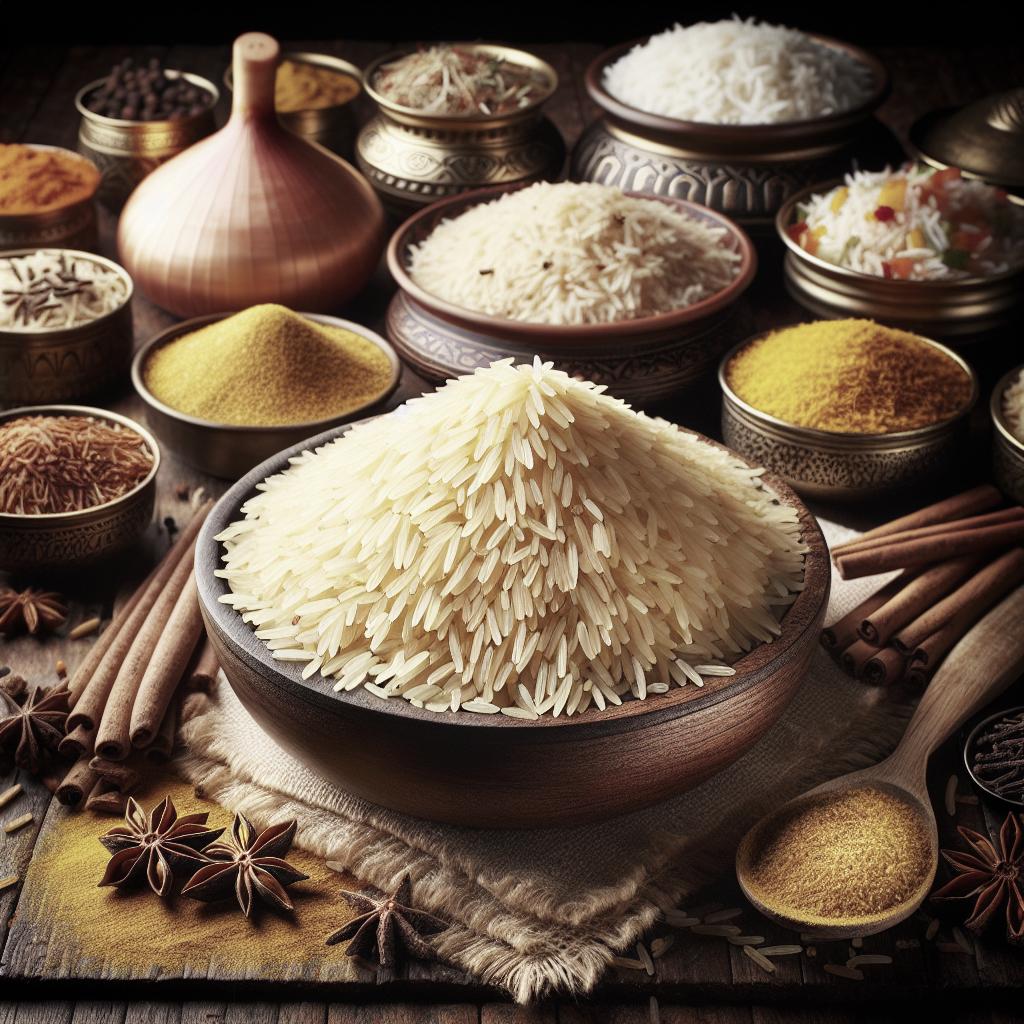“`html
The Importance of Seasonal Ingredients in Indian Cooking
The diverse landscape of India is mirrored in its cuisine, where regional flavors and traditional recipes make use of an array of seasonal ingredients. With each season ushering in a distinct array of fruits, vegetables, and herbs, India’s culinary culture embraces the bounty of nature. Eating seasonally not only enriches the flavor of dishes but also has nutritional and environmental benefits. This post explores the nuances of seasonal eating, highlighting the specific ingredients associated with each Indian season: spring, summer, monsoon, autumn, and winter. Additionally, it delves into practical tips such as visiting local markets, planning meals around seasonal produce, experimenting with new recipes, and preserving these seasonal treasures for future enjoyment. Join us on this flavorful journey to discover how celebrating seasonal ingredients enhances the authenticity and vibrancy of Indian cooking.
What is Seasonal Eating?
Seasonal eating involves consuming fruits and vegetables during the same time of the year they are harvested. It is a practice that aligns dietary habits with nature’s cycles, offering a variety of fresh produce that changes with the seasons. In India, this practice is deeply embedded within culinary traditions, as different regions offer unique produce based on their climate.
Eating seasonally is not only about enjoying produce at its peak flavor and freshness, but it also supports sustainable farming practices. By choosing ingredients that are in season, consumers typically contribute to diminished carbon footprints due to reduced transportation and refrigeration needs. This practice connects people back to their local environment, fostering a greater appreciation for the rhythm and abundance of nature’s offerings.
The Benefits of Eating Seasonally
One of the primary benefits of eating seasonally is nutritional value. Freshly harvested fruits and vegetables are packed with nutrients and are often richer in vitamins and minerals than produce stored for extended periods. Seasonal eating ensures that your diet is varied throughout the year, exposing you to a wide range of nutrients.
Economically, seasonal produce tends to be less expensive. When a fruit or vegetable is in season, it is usually in abundance, leading to lower prices. This aligns with environmental benefits by supporting local farmers and reducing the environmental cost of out-of-season agriculture techniques such as greenhouses and imports.
Spring: Fresh Greens and Legumes
As the frost of winter recedes, spring breathes life into the markets with a variety of fresh greens like spinach, tender fenugreek leaves, and juicy mustard greens. Legumes such as peas and broad beans are also abundant during this time. These ingredients form the backbone of several traditional Indian dishes, infusing them with freshness and vibrancy.
The resurgence of spring greens is celebrated in the North Indian dish, Sarson da Saag, traditionally paired with Makki di Roti, a type of cornmeal flatbread. Similarly, Andhra Pradesh boasts the aromatic Gongura, or sorrel leaves, used in a variety of pickles and curries, demonstrating the region’s commitment to savoring seasonal produce.
Summer: Hydrating Fruits and Vegetables
Indian summers can be scorching, making hydration a top priority when it comes to choosing foods. This season brings an array of water-rich fruits like mangoes, watermelons, and lychees, along with refreshing cucumbers and squash varieties. These ingredients are not only cooling but also loaded with water, which helps the body stay hydrated.
Mango, often hailed as the king of fruits, is the star of summer. It is used in a variety of preparations like Aam Panna, a refreshing drink made with raw mangoes, and in savory dishes such as mango chutneys and curries. Similarly, cucumbers are often used in salads and raita, a yogurt-based side dish, to balance the heat of summer meals.
Monsoon: Comforting Dishes
With the arrival of the monsoon, the Indian subcontinent experiences a shift to temperature-regulating and comforting foods. The humidity and coolness brought by rain demand a diet rich in spice and warmth, leading to an increased use of ginger, garlic, and peppercorns in cooking. Seasonal vegetables like okra and corn, along with herbs and spices, define the monsoon palette.
Dishes such as corn pakoras (fritters) or bhutta (roasted corn) are iconic during the monsoon. Soups and broths also gain popularity, incorporating various seasonal beans and lentils. This season encourages the indulgence of spicy, hot foods that counter the damp and chill, ensuring the immune system remains strong during the rains.
Autumn: Root Vegetables and Spices
When autumn arrives, it paves the way for root vegetables like sweet potatoes, carrots, and beets to reenter the kitchen. This transitional season prepares for the oncoming cold with ingredients that offer earthy sweetness and robust flavors, embodied in iconic dishes that utilize warming spices such as cinnamon, cardamom, and cumin.
Root vegetables are perfect for stews and curries, adding texture and subtle sweetness. For instance, Gajar ka Halwa, a sweet carrot pudding, is a classic autumn treat complemented by spices like cardamom and garnished with nuts. These grounding dishes reflect the culinary intention of nourishing and warming the body in anticipation of the winter months.
Winter: Hearty Grains and Pulses
Winter in India is marked by an abundance of grains and pulses that offer warmth and sustenance. With a preference for dishes that provide energy and heat, foods such as lentils, beans, and whole grains dominate the winter menu. Seasonal vegetables like cauliflower, cabbage, and radishes also make frequent appearances in Indian kitchens.
Traditional winter meals include heartwarming dal, stuffed parathas with radish or cauliflower, and dishes flavored with mustard oil. These foods are heavier and richer in nutrients, aimed at keeping the body warm and energized throughout the cold season, while still celebrating the produce available during this time of the year.
Visit Local Markets
Taking a trip to the local market is one of the best ways to experience and embrace seasonal eating. Markets vibrate with seasonal produce, offering a chance to connect with local farmers and understand the origins of your food. This trip not only supports the local economy but also provides insight into the farming practices employed in your region.
Engaging with vendors and farmers can also introduce you to unique, locally grown ingredients that you might not find in larger grocery stores. Building these relationships can enhance your understanding of seasonal food cycles and encourage a more mindful approach to purchasing and consuming food.
Plan Your Meals Around Seasonal Ingredients
To maximize the benefits of seasonal eating, plan your meals around the produce currently available. Prioritize ingredients that are abundantly in season to ensure the freshest flavors and highest nutritional value. Use season-based cookbooks or apps that highlight dishes according to the time of year.
Meal planning not only reduces waste but also brings variety to your diet. Incorporate a mix of traditional and contemporary recipes to fully enjoy the seasonal ingredients. This practice helps in maintaining a well-balanced diet and inspires culinary creativity by encouraging the use of lesser-known, seasonal produce.
Experiment with New Recipes
Trying out new recipes is a delightful way to explore seasonal ingredients. It allows you to expand your culinary horizon and appreciate the diverse uses of familiar and unfamiliar produce. Recipe experimentation can lead to discovering new favorite dishes or even creating your own signature meals that highlight the best of the season.
Combine traditional flavors with modern techniques or pair new spices with classic ingredients to explore the depth of Indian cuisine. Engaging with cooking in this way keeps meals exciting and ensures that your diet remains varied, nutritious, and seasonally appropriate.
Preserve Seasonal Flavors
One of the beauties of seasonal eating is the preservation of flavors that can last beyond their natural availability. Techniques such as freezing, canning, and pickling allow you to enjoy the essence of a season throughout the year. Preserving seasonal ingredients can prolong your access to their nutrition and taste.
In India, preserving seasonal produce is a rich tradition. Whether it’s pickle making, drying fruits, or preparing homemade jams, these practices ensure that the bounty of each season can be enjoyed for months to come. Savoring these preserved flavors connects you back to the season and its unique charm even when it has passed.
Lessons Learned
| Season | Key Ingredients | Culinary Focus |
|---|---|---|
| Spring | Fresh greens, legumes | Vitality and freshness |
| Summer | Hydrating fruits & vegetables | Cooling and refreshment |
| Monsoon | Spicy, warming spices | Comfort and warmth |
| Autumn | Root vegetables, spices | Nourishment and warmth |
| Winter | Grains, pulses, hearty vegetables | Sustenance and energy |
“`


